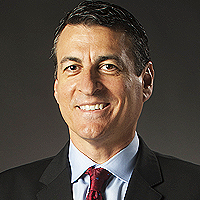Evaluation of outcomes of 8-week therapy with ledipasvir/sofosbuvir or glecaprevir/pibrentasvir in veterans with hepatitis C infection
Published on: 13th November, 2019
OCLC Number/Unique Identifier: 8333016947
Hepatitis C Virus (HCV) infection is usually treated with direct acting antivirals (DAAs) for 12 weeks. In treatment naive patients with genotype (GT) 1 infection without cirrhosis and baseline viral load < 6 million, 8 weeks of Ledipasvir/Sofosbuvir (LDV/SOF) is an option. Eight weeks with Glecaprevir/Pibrentasvir (GLE/PIB) is an option for patients with GT 1 through 6 without cirrhosis. Our objective was to evaluate achievement of Sustained Virologic Response (SVR) after 8 weeks of LDV/SOF or GLE/PIB in our HCV-infected veterans. Patients with HCV infection that received GLE/PIB or LDV/SOF for a planned 8 weeks of therapy in the past four years were reviewed (January 2015-September 2018). Treatment outcomes were evaluated through medical record review.
Two hundred sixty-five veterans were initiated on 8 weeks of therapy with either GLE/PIB or LDV/SOF. Of these, 231 (87%) were initiated on 8 weeks of LDV/SOF and 34 (13%) were initiated on 8 weeks of GLE/PIB. The majority of patients had GT 1 (93%) infection. One hundred and ninety-five veterans who completed 8 weeks of LDV/SOF and 30 veterans on GLE/PIB had follow-up viral loads. The overall SVR was 95%. Treatment with GLE/PIB resulted in a higher SVR rate (100%) compared to LDV/SOF (95%). Elderly patients had similar SVR rates. Treatment with 8 weeks of DAA is effective in our veteran population and showed an SVR rate similar to literature reports. The SVR for patients treated with 8 weeks LDV/SOF was slightly lower than the SVR for GLE/PIB; however, the GLE/PIB population was smaller
New era of liver transplantation for HIV-HCV Co-infected patients: A case report
Published on: 14th November, 2017
OCLC Number/Unique Identifier: 7317597134
Morbidity and mortality of HIV-infected patients have been improved over the last decades with the advent of combined antiretroviral therapy. As a result, other comorbidities such as chronic kidney and chronic liver diseases have emerged in the HIV population. A considerable percentage of end-stage liver disease (ESLD) in HIV population is attributed to hepatitis C co-infection and reactivation, and a growing need for solid organ transplantation has emerged among those patients. On the other hand, several studies on liver transplantations of patients co-infected with human immunodeficiency virus (HIV) and hepatitis C virus (HCV) have shown discouraging results both in patient and graft survival rates. As a result, HIV-HCV co-infection has been considered a relative contraindication for liver transplantation. Thankfully, new drugs for HCV treatment have been discovered, acting direct on viral replication of HCV and they have changed the whole clinical course of HCV/HIV co-infected liver transplant recipients. Our case illustrates the long-term efficacy and safety of the new combination of Sofosbuvir/Ledipasvir in HCV/HIV co-infected liver transplant recipients.
Safety and efficacy of sofosbuvir based regimen in the treatment of hepatitis C virus infection among hemodialysis patients in Morocco
Published on: 26th September, 2021
OCLC Number/Unique Identifier: 9244749614
The introduction of a new class of drugs known as direct acting antiviral (DAA) agents represents a revolution in the treatment of hepatitis C virus (HCV) in the general population, as these regimens are associated with higher sustained virological response (SVR) rates and fewer side effects. However, for patients with advanced chronic kidney disease suffering from HVC infection, treatment options including DAA remain limited. The aim of this study is to report our experience on Sofosbuvir (SOF) based regimen in the treatment of HCV in hemodialysis patients.In this observational study, we included all patients with chronic HCV infection on hemodialysis who were treated with SOF in our Hospital between April 2016 and March 2018. All patients were treated with a combination of 400 mg of SOF three times a week after hemodialysis and of 60 mg of Daclatasvir daily for a total of 12 to 24 weeks.A total of 20 hemodialysis patients were included in this study. 12 were females and the mean age was 52.1 ± 15.5 years. 11 patients were infected with HCV genotypes 1b. All patients achieved SVR. Clinical and biological tolerance was very good for all patients and none of them had to discontinue treatment because of side effects or developed hepatobiliary and cardiac toxicity. Two patients reported fatigue and another patient reported headaches. However, these symptoms were spontaneously resolved after the end of the treatment.In Morocco, despite the absence of new DAA combination treatment regimens which are not renally eliminated, our study concludes that SOF based treatment without Ribavirin or Peginterferon was effective and safe with minimal side effects. However, larger studies are still needed in order to validate these results.
















